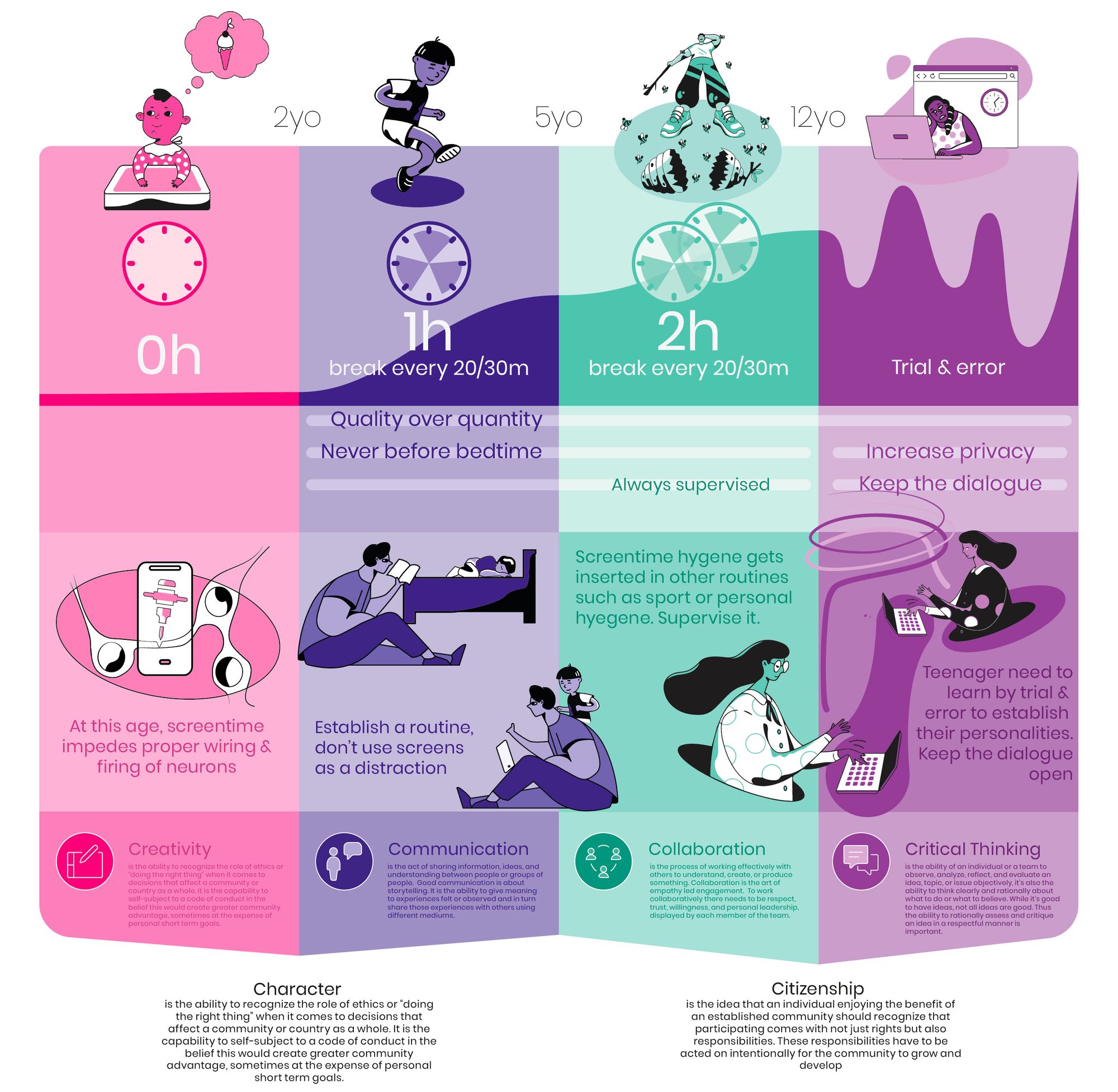With screens becoming essential for education, and a critical component of how we engage with the world, the question of whether spending time using screens is good or bad for children is no longer valid. Technology is core to how we effectively interact with the world. It has many advantages for both students and educators. But it has a downside if not managed wisely. According to a recent ParentsTogether survey, the average time spent online has doubled for kids during COVID, and 85 percent of parents are worried about this increased consumption.
49 percent of survey respondents’ kids are currently spending more than six hours a day online—compared to only 8 percent of kids before the pandemic. That’s more than a 500 percent increase!
As a parent, it is normal to be concerned about how much time your child is spending on screens. But like all newly adopted tools, screens require wisdom in their application. Parents and educators can help manage students screen time by instilling boundaries. It is more about the balance and trust, than it is about restriction, says neurodevelopmental specialist Luke Lambrechts.
“Stages happen in a specific age range based primarily on brain development. Domains, on the other hand, happen across the lifespan”, says Lambrechts.

Stages can be defined by a child’s age and his or her neurological development at that point in time.
Stage 1: Age 0-2 years
The first 600 days (2 years of age) are critical in development Significant neural pruning occurs at this stage, which is when brain connections start setting paths. Neurons that fire together, are wired together, and those pathways that are not used are lost. It is critical at this stage to expose a child to a lot of new things to encourage pathway growth as pathways that are not used are lost.
This is an important consideration when introducing children to screens at this age. Screens, and what a child associates a screen with, can become part of the input system shaping the brain.
Avoid screens for children under 2 years of age unless the screens provide a beneficial experience that may otherwise be lost. For example, the potential benefits of video chats with a grandparent would likely outweigh the exposure to screens.
Stage 2: Age 2 - 3years
Just like you would carefully choose a school or care provider, , the same thought and care must apply to choosing online content for your child. Neurologists suggest no more than 1 hour of High Quality screen time, with breaks (20 - 30-minute increments).
In addition to the amount of time, screen time must be part of a routine timetable of activity rather than as a distraction. It is also highly encouraged that screentime is with a parent so that the child can co-view and co-engage.
Screen time for children 2-3 years old are most effective when the interaction is intentional and with a parent or caregiver.
Stage 3: Age 3-9 years
School age children need to learn healthy online habits in the same ways as they learn about healthy eating, exercise, personal hygiene, schoolwork routine and bedtimes. The guide suggests 2 hours a day but stresses the type of content is more important than the time. The foundations of online hygiene are:
- Time online must be balanced with the other activities of daily living and age appropriate developmental opportunities
- Online content should be focused on interaction and education. Parents should lookfor age-appropriate content with adherence to age guidelines for apps and social media platforms.
- Parents should carefully monitor who the child engages with online. The parent and/or educator must be as present in the online world as they are in the physical and know who the child is online with
Stage 4: Age 10-16 years
Tweens & teens, need special attention in terms of online habits and behaviors. If the developmental goals have been achieved in the previous stage, young adults will have good online habits established and inhabit their online world as they do the physical.
It is appropriate for adolescents to be online-this is how the current and next generation will interact. It is in many ways the cornerstone of modern development. One needs to recognize that identity and belonging are critical developmental tasks. And that there is trial and error, when learning and boundary-pushing are inherent at this stage of development. What is essential is that parents keep a communication channel open to provide alternative and appropriate scripts to teens online curiosity. Sexual education, intimacy, consent etc. are all important in this stage as teens try on identities.
Nothing is more important than time and engagement with your child. Later, the same parents complain that their adolescents ignore them and are on the phone all the time.
The role of the adult
As parents and educators how we are seen to be using technology is essential in modelling boundaries and good online habits. When one sees parents engaging with children and the phone rings or beeps and the parent looks away from the child to the phone, this sends a clear signal to the child that they are subjugated and less important. Repeated signals can impact their self esteem.
With screens becoming an essential part to how we interact with each other, the question of whether or not our children use screens is no longer up for discussion. As parents and educators, our job is to optimize how our children use screens for their developmental success.

